The London Underground’s constant evolution has led to many stations being abandoned or relocated. As someone with an interest in abandoned places, I was fascinated by the story of Aldgate East. It was moved a mere 125 metres (410 feet) east of its original site due to the engineering challenges caused by a particularly sharp curve in the track. Although Aldgate East lives on as a vital connection, the original location and the remnants of its epic relocation remain a haunting, hidden part of London’s past.

The changes on the London Underground have not always led to expansion however. Some stations such as Aldwych have been abandoned while some have been relocated. One such station is Aldgate East which was moved a mere 150 metres (500 feet) east of its original site due to the engineering challenges caused by a particularly sharp curve in the track created when the District Railway and Metropolitan Railway were connected. Although Aldgate East lives on as a vital connection on both the District Line and Hammersmith & City Line, the original station remains abandoned just a short distance away.
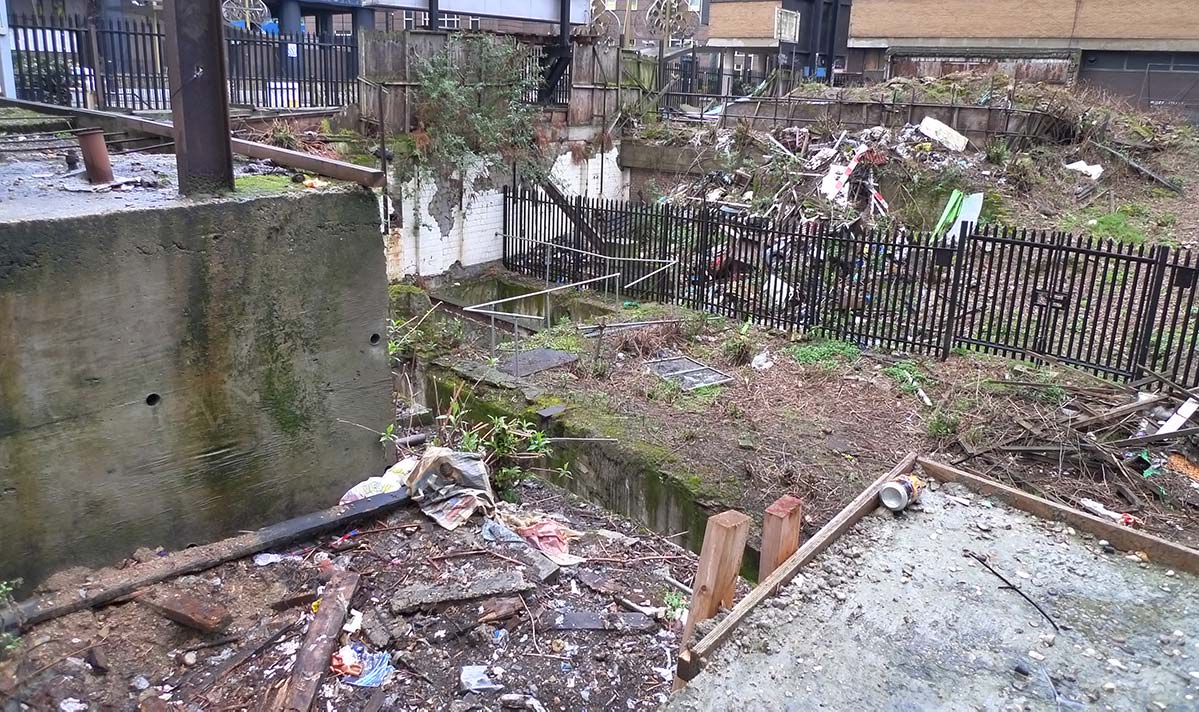
Where is the Original Aldgate East Station?
The original Aldgate East station was located at the junction of Whitechapel High Street and Commercial Street, near Goulston Street. It stood slightly west of the current station, which replaced it in 1938 when the platforms were shifted about 125 metres (500 feet) eastward to improve track layout and accommodate longer trains. After the move, the old station was closed and later demolished, though its former location can still be pinpointed by comparing historical maps and photographs of the area.
The History of Aldgate East
When the Metropolitan Railway opened in 1863 as the world’s first underground railway, London was not only the centre of the vast British Empire, it was also the biggest city in the world. Britain had been at the centre of the industrial revolution which led to the creation of railways as a viable means of transportation. When that technology was put to use underneath the busy streets of London and proved to be extremely effective, plans were immediately put in place to expand on the idea.
A number of applications for underground railway lines were made to parliament following the success of the Metropolitan Railway and a committee was set up to review all options. The District Railway had proposed linking all the major railway termini in London with a line from Westminster to South Kensington where it would link with an extension the Metropolitan Railway was constructing from Paddington.
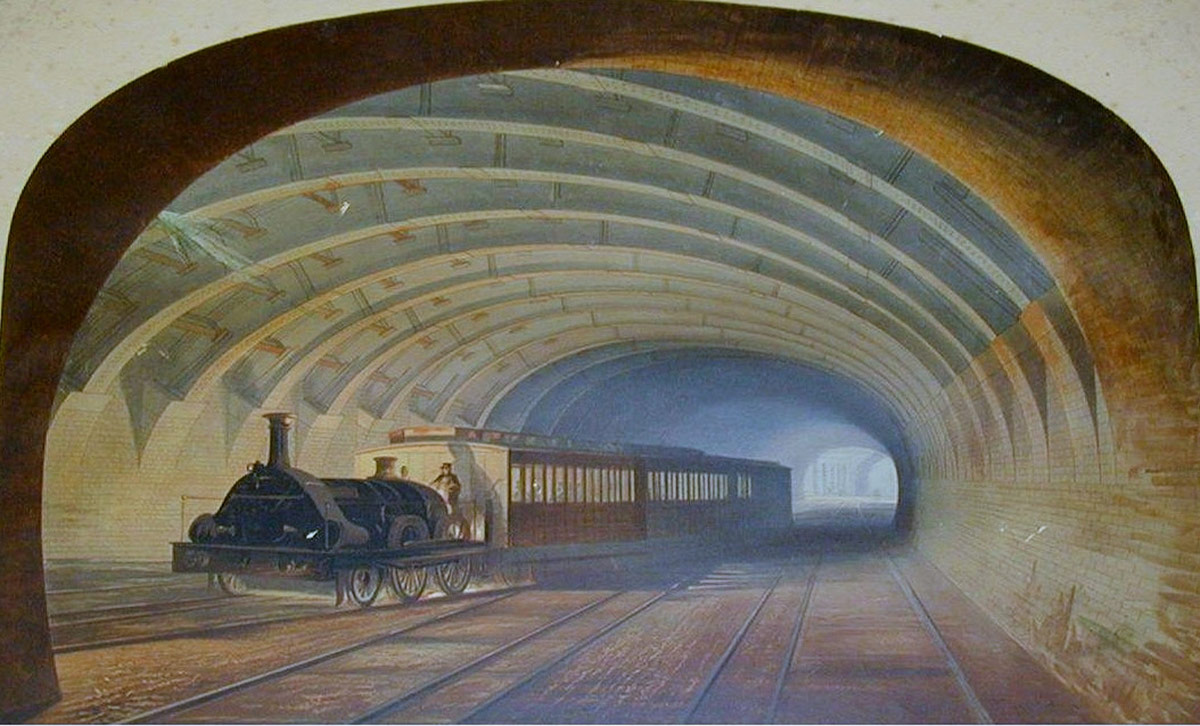
Engineered by notable figures like John Fowler and Sir John Hawkshaw, the District Railway pioneered innovative techniques in tunnelling and construction, setting the stage for future subway systems around the globe. It was built using a combination of cut-and-cover and deep-level tunnelling techniques.
The process began with engineers excavating large trenches along the route, usually in major streets or thoroughfares. Once the trench was dug, workers built a sturdy tunnel structure using bricks or cast iron segments, covering it over to create the street surface.
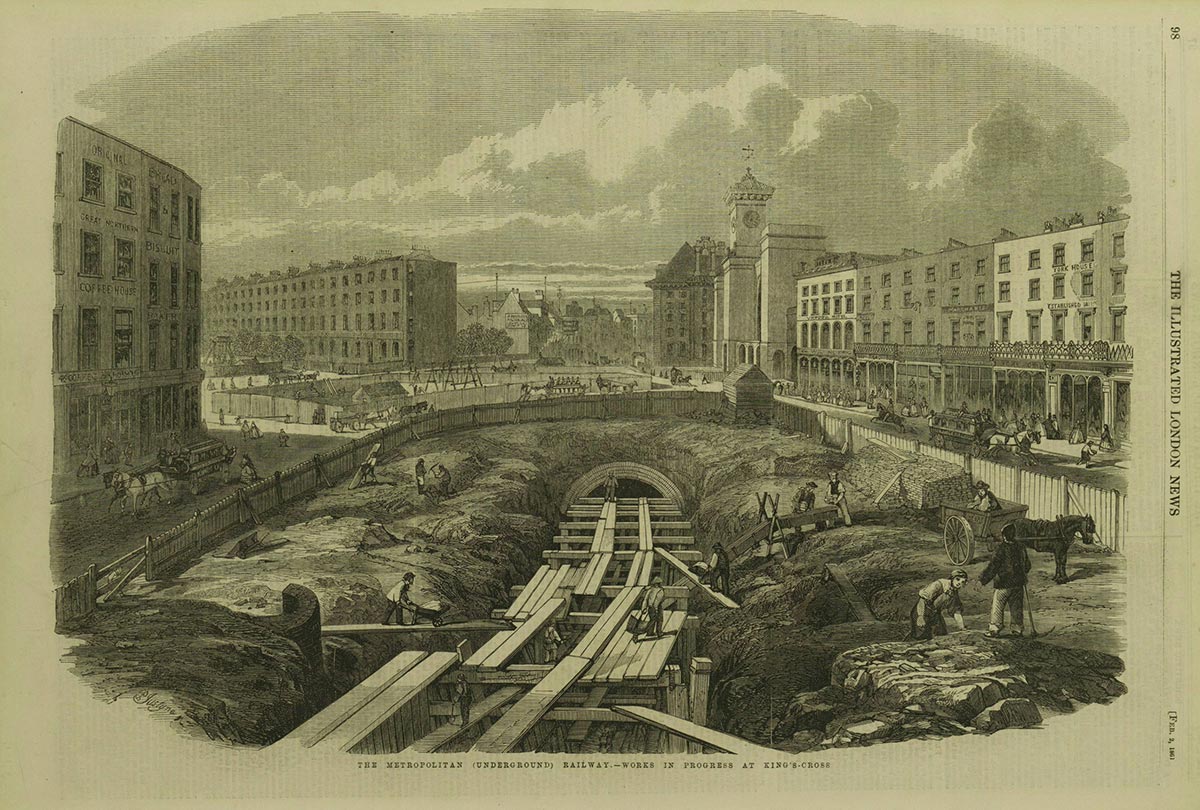
For sections that required deeper tunnels, such as under existing buildings or waterways, a process called shield tunnelling was employed. This involved digging a tunnel using a cylindrical shield at the front, which protected workers while they excavated soil and installed tunnel linings behind it. This method allowed the railway to pass under obstacles without disturbing the surface.
The District Railway opened on Christmas Eve in 1868. Originally, all services were operated by the Metropolitan Railway. The combined route along both lines created what would become known as the Inner Circle. This connection linked many of the important locations in London. Eastward extensions were built first to Blackfriars and then to Mansion House. The District Railway began operation its own services on 1 July 1871.

Plans to complete the Inner Circle were delayed in the 1870s due to conflict between the Met and the District. Numerous attempts were made to move the project forward to no avail. Finally, in 1879, an agreement was made to jointly finish the Inner Circle and to link to the East London Railway. Two stations would be built on the link, Aldgate East and St Mary’s.
Aldgate East underground station opened on 6 October 1884 as District Railway services to Whitechapel began. The station was originally proposed to have the name Commercial Road however Aldgate East was eventually chosen, despite the station actually being in Whitechapel.
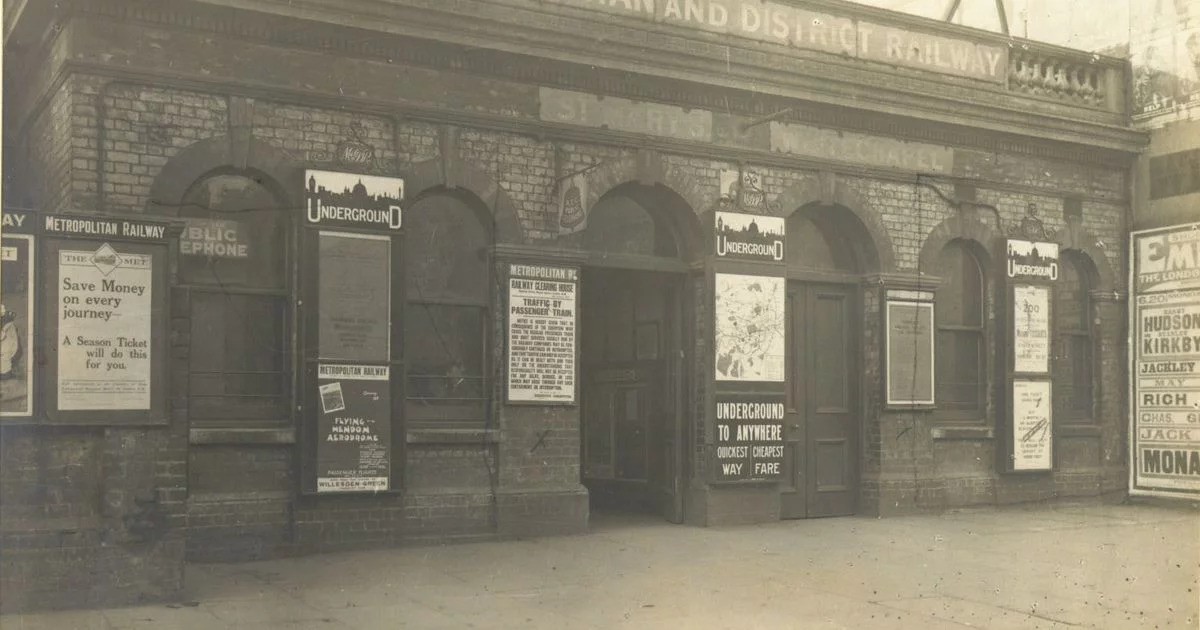
The already existing Aldgate station was opened as an extension to the Metropolitan Railway on 18 November 1876. The historic Aldgate area was one of the original gates in the London Wall, a defensive wall built by the Romans around the city of London in the late 2nd century AD. A further extension south to Tower Hill in 1882 completed the Inner Circle and made the District Line extension to Whitechapel possible.
When Aldgate East and the extension to Whitechapel opened, it served as a vital link between the East End and Central London. In the Autumn of 1888, only 4 years after the station opened, the area became the centre of a mystery which gripped London and the world. A series of grizzly murders were committed by a serial killer who became known as Jack The Ripper.
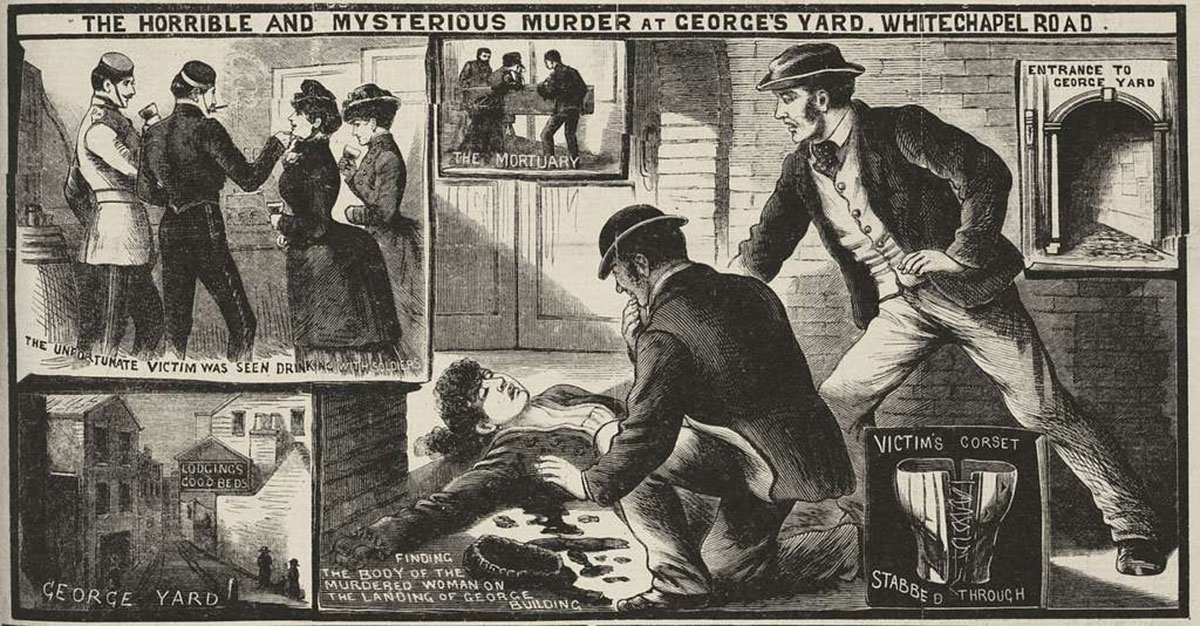
Operating under the cover of darkness, the Ripper brutally murdered and mutilated at least five women, known as the canonical five, sparking widespread fear and fascination that continues to captivate the public imagination to this day. Despite intense investigations and countless theories, the true identity of Jack the Ripper eluded the police of the time. The Ripper’s gruesome crimes, marked by their brutality and the apparent lack of motive, shocked Victorian London. The entrance to Aldgate East station was a short distance from where some of the murders took place.

As the 20th century began, the Metropolitan and District Railways began to face competition from new electric, deep-level tube lines. The use of steam propulsion led to smoke-filled stations and carriages that were unpopular with passengers and they flocked to the new lines. A decision was made to electrify the District Railway and American Charles Yerkes stepped in to finance the project. He had been instrumental in developing the street car network in Chicago and he put his expertise to use in London. He would soon take over the District Railway alongside others in development to form the Underground Electric Railways Company of London (UERL). Electrified services on the District Railway began in 1905.

Why was it Abandoned?
Aldgate East continued to operate in its original location until the 1935–1940 New Works Programme which came about as a result of the formation of The London Passenger Transport Board (LPTB). It was established in 1933 under the London Passenger Transport Act. Prior to its formation, London’s public transport system was fragmented with various independent operators running buses, trams and underground railways. The LPTB unified these services, overseeing their operations and modernisation. It introduced standardised fares and expanded infrastructure, resulting in a more efficient and integrated public transport system for Londoners.
The New Works Programme proposed addressing the sharp curve which had proved problematic since the linking of the Metropolitan and District Railways and the decision was made to relocate Aldgate East 150 metres (500 feet) to the east. This also brought it closer to St Mary’s station, making it redundant. That station was permanently closed after the last train on 30 April 1938.
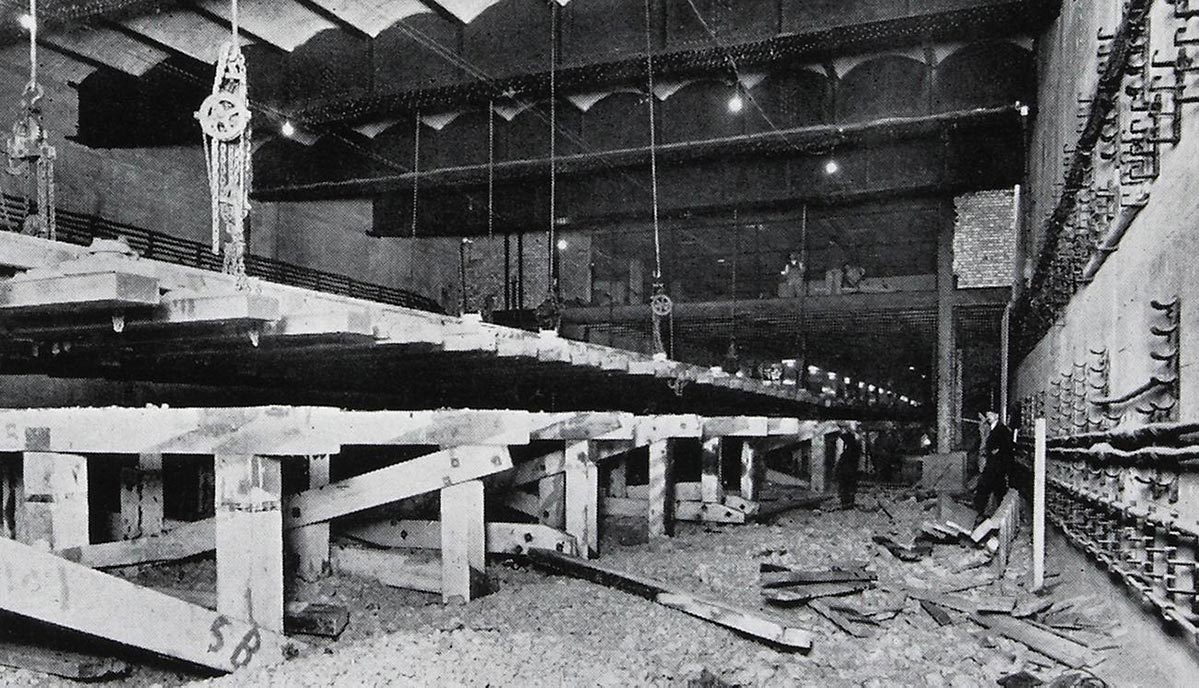
As part of the construction process, the existing track was lowered by over 2 metres (7 feet). To accomplish this without disrupting daytime operations, workers excavated the track bed and supported the track with a timber trestle framework. After the excavation and construction of the new station, a workforce of over 900 labourers simultaneously lowered the entire track overnight, utilising overhead hooks to suspend sections of the track as needed. Some of these hooks can still be seen today.

The original Aldgate East station closed on 30 October 1938 and the new station opened the following day. The new station also created a vital pedestrian underpass. Costs and journey times were also reduced as a result of merging the station with St Mary’s.

Aldgate East remains an important transportation hub, connecting various parts of East London with Central London. It serves as an interchange between the District and Hammersmith & City lines, providing access to attractions such as Brick Lane, Spitalfields Market and the Whitechapel Gallery.
What is the Original Aldgate East Station Like Now?
Unlike some other disused Underground stations, nothing of the old Aldgate East survives above ground. The entrance was demolished, and the platforms were completely erased as part of the track realignment. If you stand at the original site today, there are no obvious traces of the old station.
However, the true ghost of the station is visible inside the tunnel. If you are riding through the current Aldgate East station, look up. You can still see the heavy-duty eye-bolts embedded in the ceiling. These were essential hooks used to suspend the entire live track while the 900-strong workforce lowered the line 2 metres (7 feet) overnight in 1938, a stunning forgotten piece of engineering history.
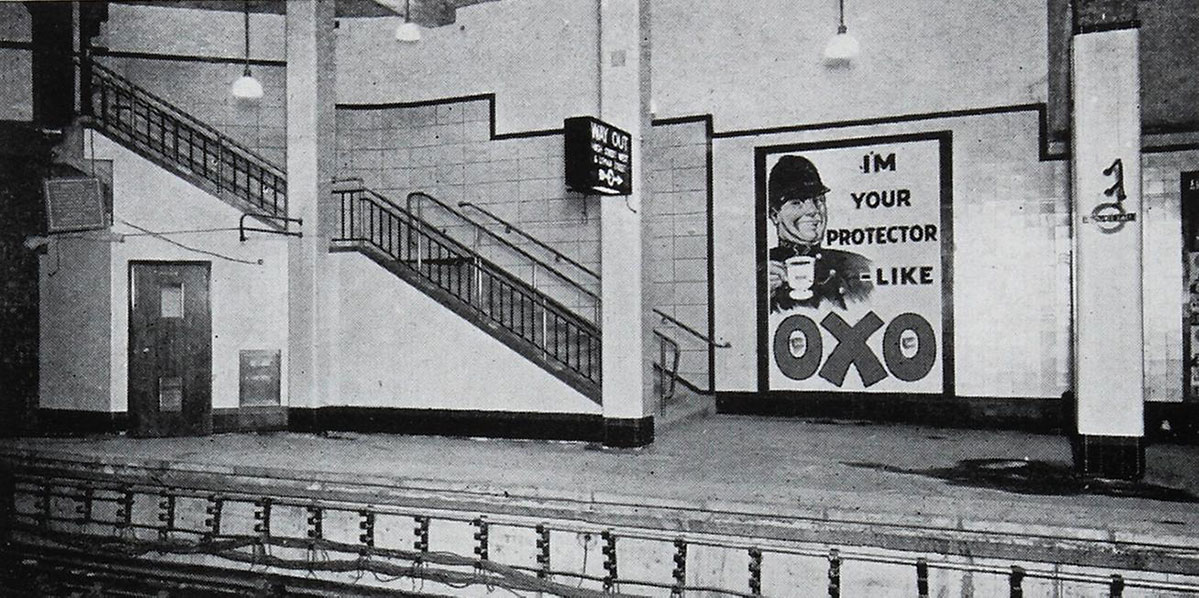
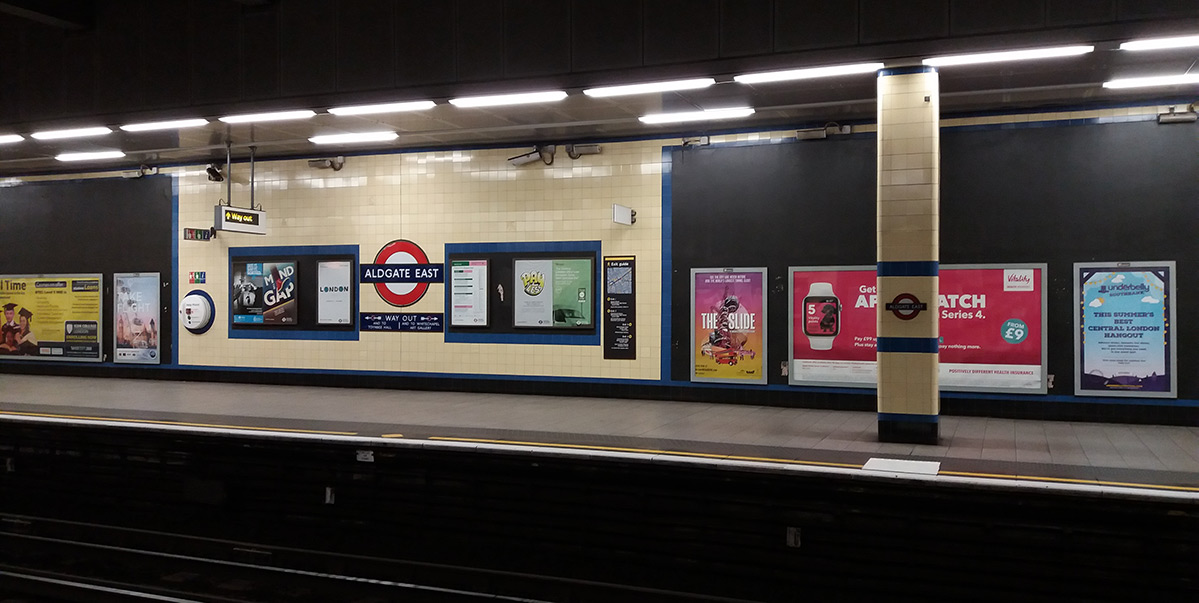
The story of Aldgate East is a testament to the ingenuity required to build and maintain the world’s oldest metro system. This fascinating video explains the complex engineering challenge of lowering the tracks and the incredible logistics involved in the 1938 move.

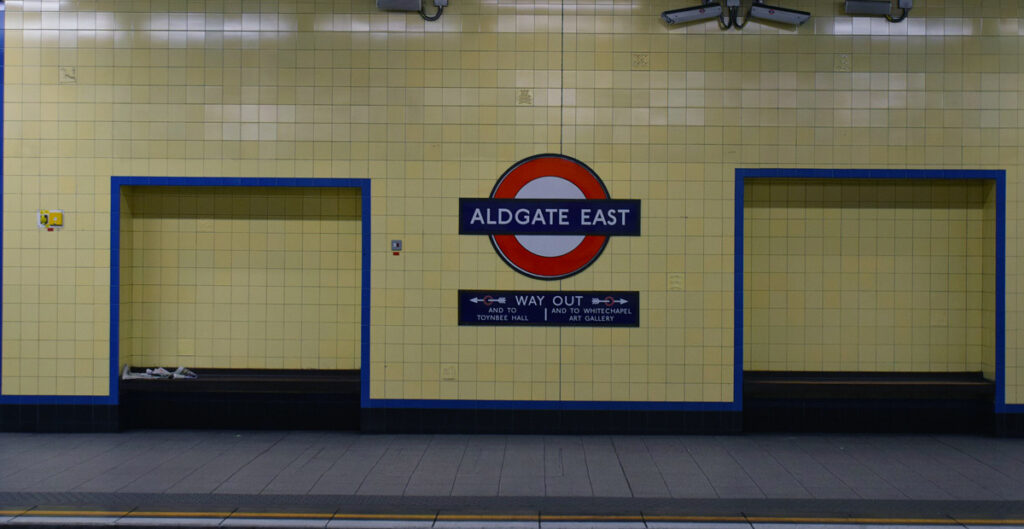
Pingback: Aldwych Branch Line - An Abandoned Underground line in London 🇬🇧